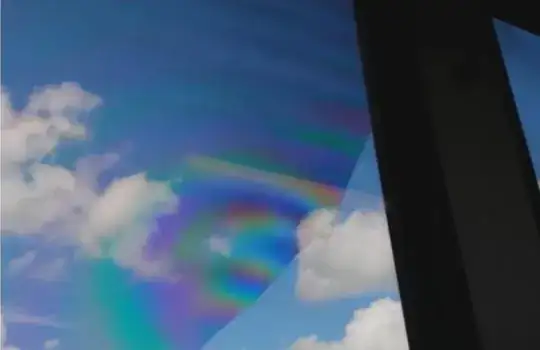The first picture is that of my window while the second is its reflection as seen from the floor. The pattern depends on the angle. That is when I move a little closer then look at the reflection the left part of window becomes transparent and the pattern is only seen at the middle and the end.
What causes this?
I don't think it can be thin-film interference from any thin layer formed at the surface of my floor since the pattern is uniform while the floor cannot be so smooth.
Also if this was caused by dispersion then the white light from my led should also get dispersed and I don't think that the dispersion would depend on the angle. These are my attempts to understand this. Any input is appreciated. Some new observations: 1)The pattern is only visible when the window is closed. If I keep a mirror on the floor where the pattern is formed , the reflection from mirror causes no pattern while the rest shows the same pattern.
2)The pattern is most prominent at the evening when the Sun is almost below the horizon (sunset). I have completely ruled out thin-film interference with this new data.
My best guess now is that my window mirror absorbs some colors and this is enhanced by the reflection from the floor.
Related to Alphy's answer
- How does the thicker thinner argument reconcile with the uniform colours and almost constant widths of each colour at a slanted angle? Also the colours get repeated after some interval which would imply that thickness decreases then increases or that the angle somehow (still confused about the angle argument) to give thaf red which seems unlikely.
- You have mentioned that reflected light enhances the effect (which I also think) but putting a mirror where image is formed does not give any colour. So why would reflection from floor only do this and not the mirror? 3)"The glass changes the angle (and it does so differently for different wave-lengths) at different points, therefore, light gets censored differently at different points" yet the colours have a width and are uniform. This would imply that the change in angle at different points etc etc would have to happen in a very special way to give this pattern.




